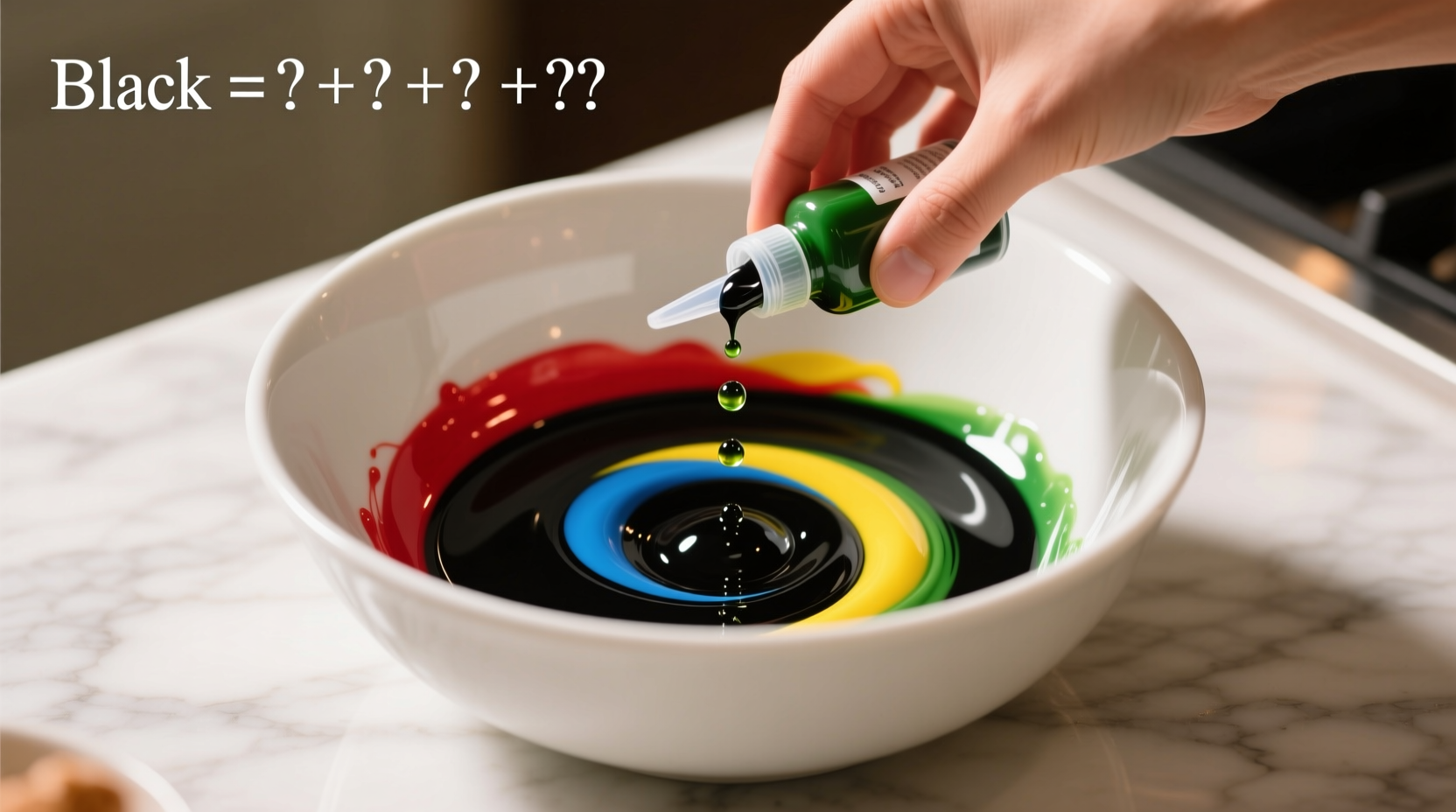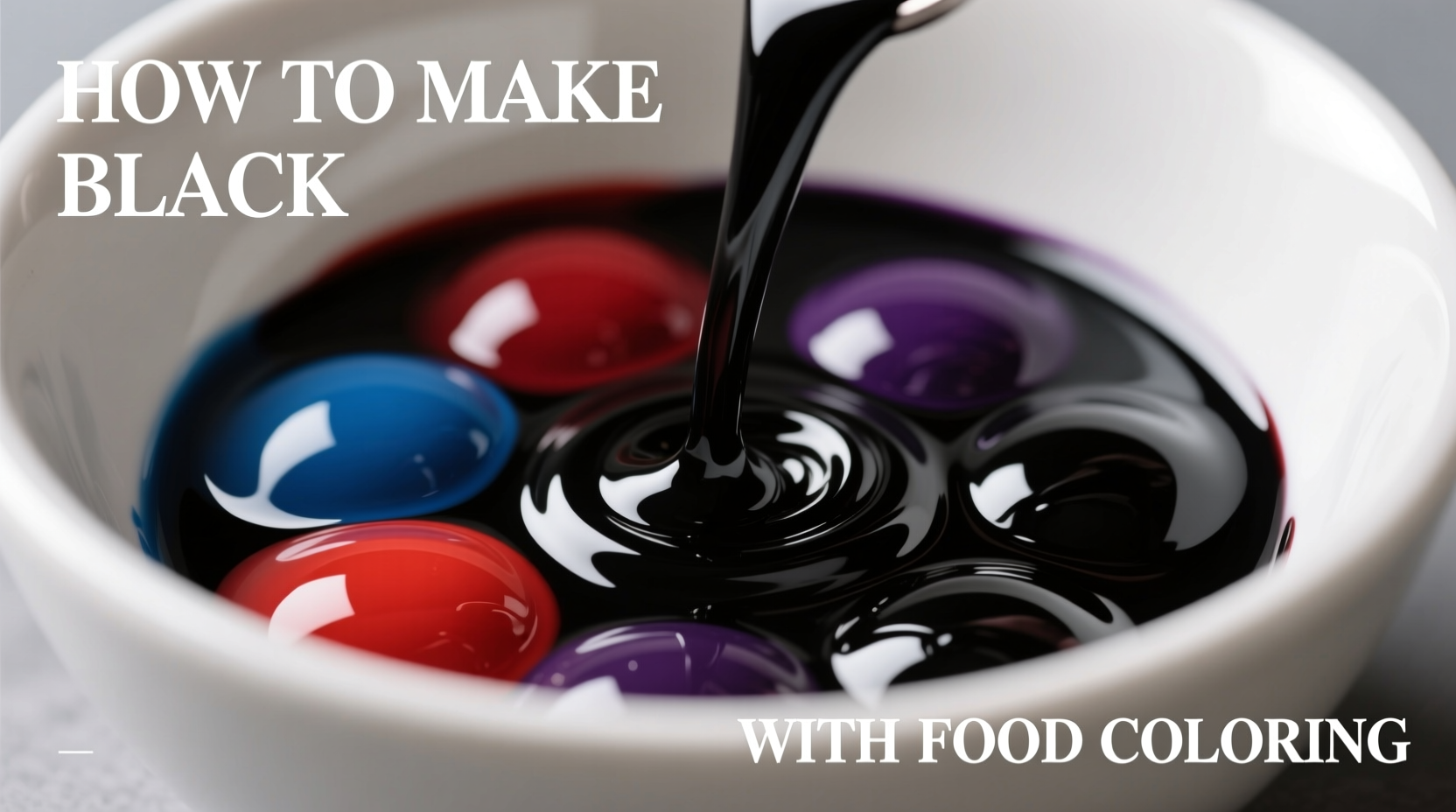Creating authentic black food coloring at home solves a common dilemma for bakers and decorators. Most standard food coloring sets don't include black, forcing creative solutions when you need that dramatic midnight hue for cakes, cookies, or specialty desserts. The challenge lies in understanding color theory specifically applied to edible mediums.
The Science Behind Black Food Coloring
Black isn't a standard color in food coloring sets because achieving true black requires precise pigment concentration that standard liquid dyes can't provide. Food scientists explain that black absorbs all visible light wavelengths, which in practical terms means you need to combine multiple colors at high concentrations.
According to the U.S. Food and Drug Administration, food coloring must meet strict safety standards, which is why commercial black food coloring uses approved dyes like Brilliant Blue FCF (Blue 1) combined with other certified colors.
Why Gel Coloring Works Best
Liquid food coloring contains too much water to achieve deep black without altering your recipe's texture. Professional bakers at the Culinary Institute of America recommend using gel or paste coloring, which contains 3-4 times more pigment. As Antonio Rodriguez explains from his Michelin-starred kitchen experience: "The water content in liquid dyes dilutes batter and frosting, while concentrated gels deliver color without compromising texture."
| Coloring Type | Pigment Concentration | Suitable for Black? | Best Applications |
|---|---|---|---|
| Liquid drops | 5-10% | No | Pale pastels, light tints |
| Gel paste | 30-40% | Yes | Dark colors, black, detailed work |
| Commercial black | 50-60% | Best option | True black, large batches |
Three Reliable Methods to Make Black
Method 1: Primary Color Approach
This beginner-friendly technique uses basic colors you likely already have:
- Start with 15 drops blue gel coloring
- Add 10 drops red gel coloring
- Gradually incorporate 8 drops green gel coloring
- Mix thoroughly and adjust with tiny amounts of blue for depth
Method 2: Complementary Color Technique
Professional cake decorators prefer this method for richer results:
- Create deep purple by mixing 12 drops blue + 10 drops red
- Add 6 drops yellow to neutralize the purple
- For true black, add 2-3 drops brown gel coloring
- Adjust with additional blue if appearing too brown
Method 3: Brown Base Method
When working with chocolate or caramel bases:
- Start with 10 drops brown gel coloring
- Add 8 drops blue gel coloring
- Gradually incorporate 5 drops purple gel coloring
- Use sparingly in dark batters to avoid gray tones

Troubleshooting Common Issues
Muddy brown instead of black? You've likely added too much red or yellow. Counteract by adding tiny amounts of blue (1 drop at a time).
Grayish appearance? This happens when colors aren't fully incorporated. Mix for 2-3 minutes longer or add a touch more blue.
Altered recipe texture? You've used too much liquid coloring. Switch to gel/paste formulas and use a toothpick tip for minute adjustments.
Contextual Limitations: When Homemade Black Won't Work
Understanding where DIY black succeeds and fails prevents baking disasters. Food science research from the USDA National Institute of Food and Agriculture shows that:
- Works well: Buttercream frosting, royal icing, cookie dough
- Limited success: White cake batter (may turn gray)
- Avoid completely: Clear liquids like jello or beverages
- Better commercial option: Large batches requiring true black
Safety Considerations
The Center for Science in the Public Interest recommends:
- Never exceed 1/8 teaspoon coloring per cup of batter
- Avoid non-food-grade dyes (like craft inks)
- Test small batches first for color stability
- Store homemade mixes in airtight containers away from light
Practical Application Tips
For professional results:
- Mix colors 30 minutes before use for full development
- Add coloring to white bases for truest black
- Use separate utensils for black to prevent cross-contamination
- For edible painting, dilute with clear alcohol (vodka) instead of water
When to Choose Commercial Black
While homemade works for most applications, professional bakers recommend commercial black when:
- Creating large batches (over 2 cups of frosting)
- Needing consistent color for event baking
- Working with delicate recipes sensitive to liquid content
- Requiring FDA-certified coloring for commercial sales











 浙公网安备
33010002000092号
浙公网安备
33010002000092号 浙B2-20120091-4
浙B2-20120091-4